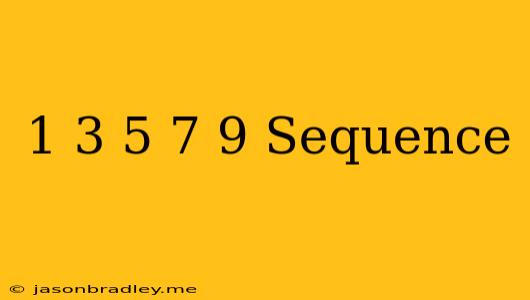The Curious Case of the 1, 3, 5, 7, 9 Sequence
The sequence 1, 3, 5, 7, 9... is a simple yet intriguing one. It's a sequence of odd numbers, and understanding its properties and variations can be a fun exercise in mathematics.
What Makes It Special?
- Pattern Recognition: The most obvious characteristic is that each number is 2 greater than the previous one. This pattern makes it easy to continue the sequence indefinitely.
- Arithmetic Progression: This sequence is a classic example of an arithmetic progression. In an arithmetic progression, the difference between consecutive terms is constant, which is 2 in this case.
- Sum of Odd Numbers: The sum of the first n odd numbers can be calculated using the formula: n². For example, 1 + 3 + 5 + 7 + 9 = 5² = 25.
- Applications in Coding: This sequence is used in various coding scenarios, especially in algorithms related to iterating through odd numbers or finding patterns within data.
Variations and Extensions
- Even Number Counterpart: The sequence can be easily modified to represent even numbers: 2, 4, 6, 8, 10...
- Generalization: We can generalize this sequence to any starting odd number and a constant difference. For instance, 11, 13, 15, 17, 19... is an arithmetic progression starting at 11 with a difference of 2.
- Infinite Sequence: As the sequence is defined by a simple pattern, it can theoretically extend infinitely.
Beyond the Basics
Exploring this simple sequence can lead to deeper mathematical concepts. For instance:
- Generating Functions: A generating function can be used to represent the entire sequence in a compact form.
- Series Convergence: While the sequence itself is infinite, exploring the sum of its terms can lead to fascinating results related to convergence.
- Number Theory: This sequence is closely related to prime numbers and divisibility rules.
The 1, 3, 5, 7, 9 sequence might seem basic, but it opens doors to a world of mathematical exploration, revealing patterns, relationships, and applications that go beyond the surface.
